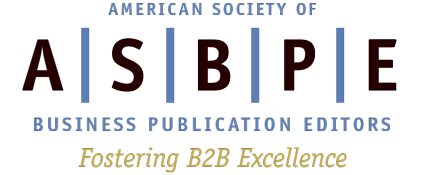Disruptive editorial content means taking a break from normal course of action in order to stand out.
Disruption is often a bad thing. The word can be used to describe something that causes division or turmoil. It makes me think of someone who inappropriately screams, “Fire!” when there is no fire in a movie theater, or a student acting out at school in an effort to end class early.
However, the word “disrupt” is also defined in the Merriam-Webster Dictionary as “to radically change [an industry, business strategy, etc.] as by introducing a new product or service that creates a new market.” It is a break from the normal course of action. And that kind of “disruption” can be a good thing when mediocrity has prevailed for far too long.
Creating disruptive editorial content helps to differentiate your brand from competitors—especially if applied in the right cases at the right time.
Sometimes, creating disruptive editorial content means trying new types of social media to connect with new audiences. An example of this can be found on the social media feeds for The Washington Post. In recent months, Dave Jorgenson, a video producer for The Washington Post, began using Tik Tok, a social media app for sharing short video clips, to share quirky videos that highlight the newspaper’s brand. Jorgenson is using this app in hopes of exposing younger audiences to the newspaper’s brand and eventually expanding the newspaper’s subscriber base.
About 16.2 million people under the age of 25 use the Tik Tok app. Currently, The Washington Post has about 146,000 fans on Tik Tok and 3.2 million likes on 98 videos. This type of social media platform might not work well with breaking news, but it could be a unique platform to introduce younger audiences to a publication’s brand. It disrupts the norm and engages new audiences.

Creating disruptive editorial content also means sharing stories in new multimedia formats. For instance, instead of sharing a traditional press release on a new product for readers, try sharing a slideshow that tells a story. Expand on the print cover story with a podcast with some of the sources from that feature.
Also, creating disruptive editorial content means finding unique angles for feature articles. This might be tough for editors who have been covering the same industry for many years and it might seem like they know just about every story there is to be told in the industry. However, seasoned editors need to make sure they keep their curiosity levels high. A good way to do that is by asking unusual questions in interviews and by taking time to get to know the people in the industry you cover better.
A colleague of mine shared a story recently about how he’s been covering the golf course industry for more than five years. When he was working on a typical feature profiling a golf course, he discovered a more compelling story about that golf course’s superintendent. He learned the superintendent was planning to donate his kidney to a competitor superintendent who was dying. While that wasn’t the original story this colleague of mine was preparing, he was willing to disrupt the normal course of action and instead tell the more compelling, less conventional story. And that offered a lot more value and insight to readers than would the normal coverage.
The content that B2B magazines share should ultimately help readers do their jobs better. The content also needs to be unbiased, sharing both sides of stories regardless of the topic. We can’t forget our mission to create good content that readers keep on their shelves for a long time.
We will fail as B2B media brands if we simply copy our competitors and maintain status quo. That mentality works for a while, but it ultimately falls short in the long run. There are seasons when disruption is demanded; change must be made. While it would be ridiculous to constantly change a magazine’s design or try dozens of multimedia formats at once, it’s good for a publication’s team to consider if taking a risk in one way or another would be beneficial to the brand.
Disruptive change is something that should be considered periodically, as well. Take some time each season to consider whether your publication needs to take a risk.
